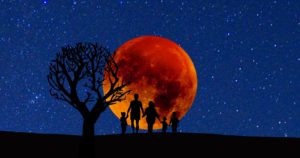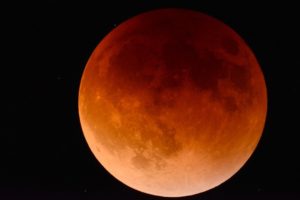
The longest total lunar eclipse of the 21st century takes place this Friday, July 27. A similar one will next be seen in 2123.
The total phase of the “blood moon” eclipse of July 27 will last 1 hour and 43 minutes, during which Earth’s natural satellite will turn a spectacular red or ruddy-brown color. From start to finish, the entire celestial event will last nearly 4 hours.
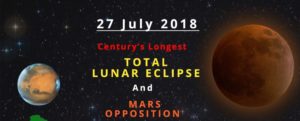
July’s total lunar eclipse occurs on the same day the planet Mars reaches its opposition, when it will shine at its best in the night sky. This month, Mars will be at its closest (57.6 mi km)to Earth since 2003. After opposition, when Mars will be brightest, it will reach that closest point on July 31. NASA says this won’t happen again until 2287.
What is a Lunar Eclipse and how do we observe it?
Unlike with solar eclipses, you need no special equipment to observe lunar eclipses. These latter events, which occur when the moon passes into Earth’s shadow, are safe to view directly with the naked eye, telescopes or binoculars.
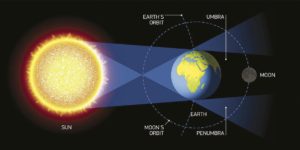
The moon turns deep red or reddish brown during eclipses, instead of going completely dark. That’s because some of the sunlight going through Earth’s atmosphere is bent around the edge of our planet and falls onto the moon’s surface. Earth’s air also scatters more shorter-wavelength light (in colors such as green or blue); what’s left is the longer-wavelength, redder end of the spectrum.
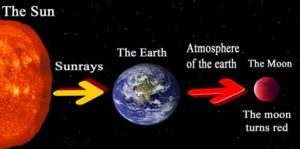
Where and when will it be visible?
The timing if this total lunar eclipse means it won’t be visible from North America, though much of the Eastern Hemisphere of Earth will see part or all of the eclipse. The entire eclipse will be visible from Africa, the Middle East and countries in central Asia. The eclipse will be visible from eastern South America as it is ending, and from Australia as it is beginning.

The time of greatest eclipse will be 4:21 p.m. EDT (2021 GMT) on July 27, according to EarthSky.org. The total eclipse will last from 3:30 p.m. to 5:13 p.m. EDT (1930 to 2113 GMT). There will also be some time before and after when the moon is in the lighter part of Earth’s shadow, which is called the penumbra. Including that penumbral time, the eclipse will last for 3 hours and 55 minutes.
When will it be visible from India?
The first part or phase of lunar eclipse will see the moon fall under the earth’s shadow. This phase is known as the penumbral eclipse (initial stage). The event is said to begin from 11:44 pm IST on July 27. The first phase of the lunar eclipse is expected to set in from 11:54 pm. The total lunar eclipse is estimated to set in from 1:00 am IST on July 28. From 1:15am to 2:43am, the moon will be in the middle of the Earth’s shadow and will appear reddish in colour. It is known that the total lunar eclipse or Chandra Grahn effects will be visible in cities including Delhi, Pune, Bengaluru and Mumbai among others.
For the second phase, as the moon continues on its orbit, there will be another partial lunar eclipse, which will be visible from around 2:43 am IST. The eclipse will continue till 4:58am though the effect will not look as great.
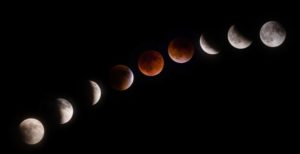
Why is it the longest of the century?
What controls the duration of the lunar eclipse is the position of the moon as it passes through the Earth’s shadow. The darkest part of Earth’s shadow is called the umbra. You can picture the umbra as a cone extending from Earth in the opposite direction to the sun.
The moon can either graze through the cone, or go right through the middle. That [the middle] gets a longer-duration eclipse. This time, the moon is passing closer to the center of that cone, and it’s therefore a little bit longer than the eclipse we had back in January, 2018.
Additionally, the moon will be at a farther point from Earth along its orbit(apogee), EarthSky pointed out. That means the moon will appear slightly smaller in the sky and will take a little bit longer to go through Earth’s shadow.
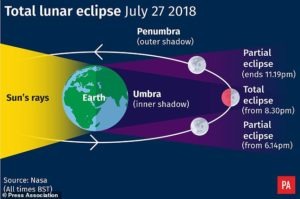
So what are you waiting for? Pack your bags, nature has got you the best weekend plan! Go and enjoy this beautiful phenomenon with your loved ones. TGIF!
